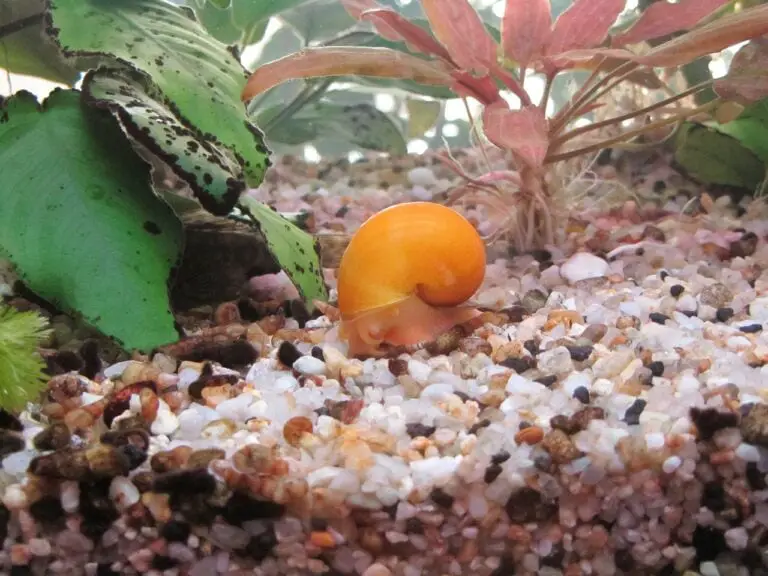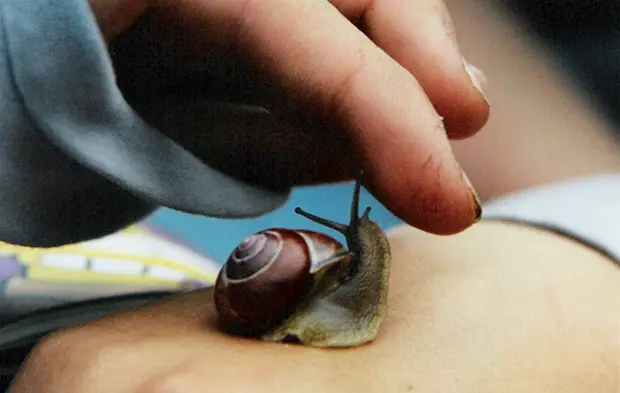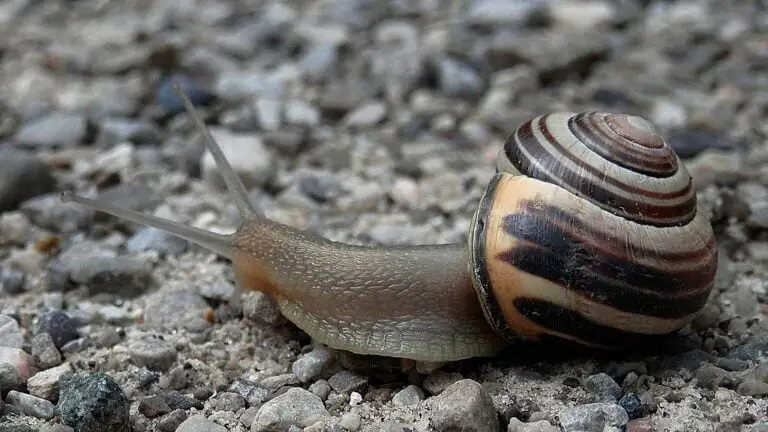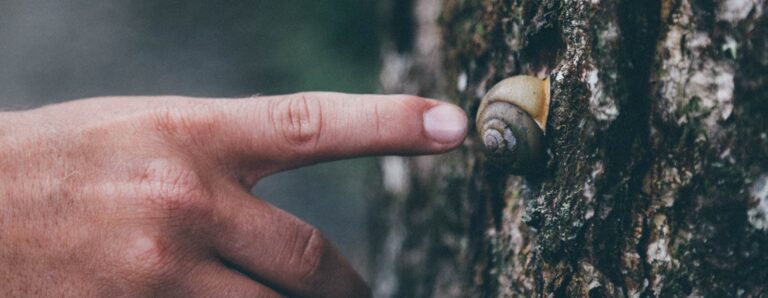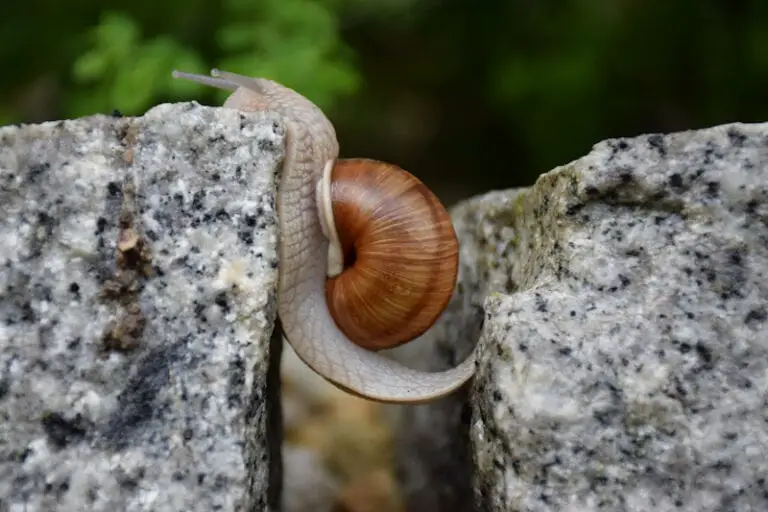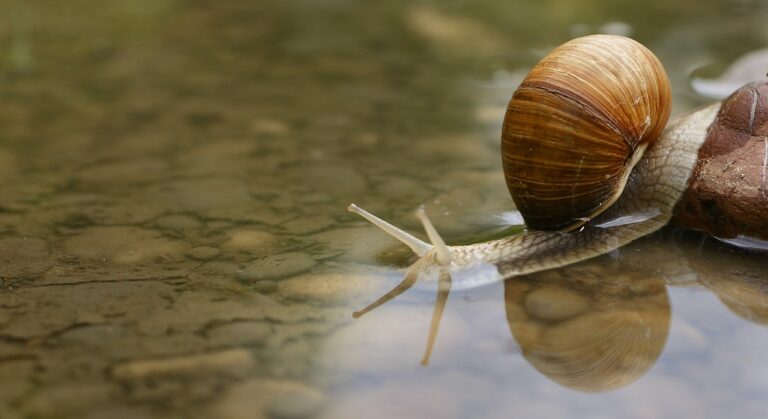What Do Snails Eat? A Comprehensive Guide to Their Diet
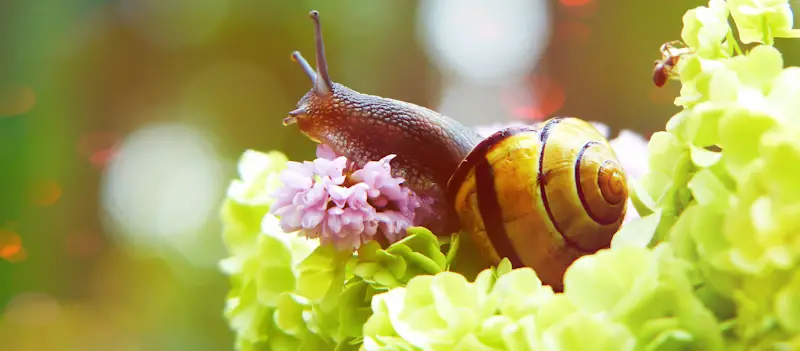
Snails are fascinating creatures that play an important role in the ecosystem. They are part of the mollusk family and are found all over the world. Snails come in different shapes, sizes, and colors, ranging from tiny snails to giant ones that can measure up to 30 centimeters in length.
These creatures are not only interesting but also have an essential function in our environment. Snails are known for their ability to transform organic matter into rich soil nutrients, which is vital for the growth of plants.
They help break down decaying matter such as leaves and dead animals into small particles that can be absorbed by other organisms. Snail’s feces also contain high levels of nitrogen, which is a crucial nutrient for plant growth.
The purpose of this comprehensive guide is to provide you with a detailed understanding of what snails eat and how their diet affects their survival. Even those who keep snails as pets may not know what food they need to survive.
To that end, we’ll explore the general diet of snails and the specific foods that they eat. But not only that, we”ll also cover their unique eating habits and the environmental factors that affect their diet. Finally, we’ll conclude with why understanding a snail’s diet is crucial for their survival and importance in our ecosystem.
So grab your favorite beverage and let’s dive into the world of snail diets!
General Diet of Snails
Snails are known for their slow movement, but they have a diverse and interesting diet. They are classified as both herbivores and omnivores, meaning they eat both plants and animals.
The type of food that snails consume varies depending on the species of the snail. Some prefer specific types of leaves or flowers, whereas others enjoy a variety.
Herbivorous snails primarily consume plants such as leaves, fruits, vegetables, and flowers. They use their radula, a rough tongue-like structure in their mouth that has small teeth on it to scrape off small pieces of food from the surface they are eating from.
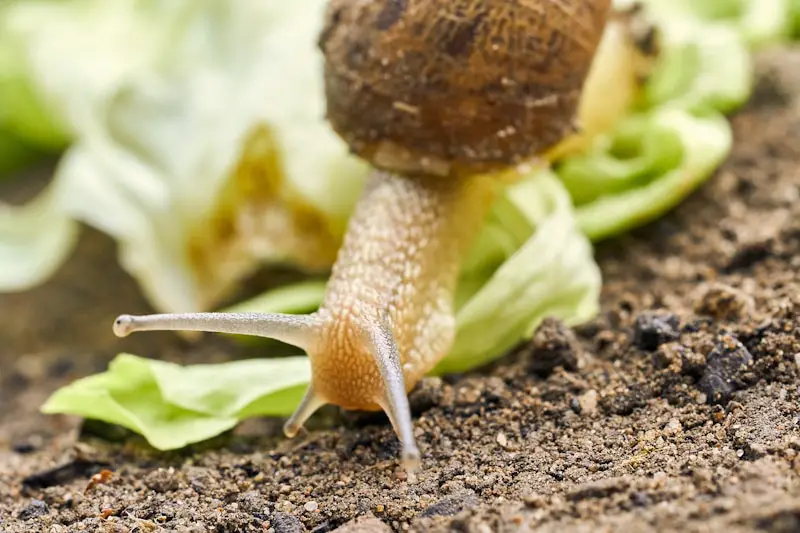
This process is called rasping. Some herbivorous snails might also ingest soil when eating certain types of plants since it helps with digestion.
Omnivorous snails also eat plant matter but also eat other small creatures such as insects and fungi. Insects provide protein for omnivorous snails; they can also eat dead insects or parts of larger animals left behind by scavengers like birds or other insects.
Types of Food that Snails Eat
Snail diets depend on the species’ preferences and range from algae to fruits to decaying organic material in soil. Snails vary greatly in size; therefore what is considered ‘food’ differs greatly across different species based primarily on mouth size. Some common foods that most snail species will eat include fresh greens such as lettuce, collard greens or kale along with fresh fruit like apples or strawberries.
Vegetables like carrots or broccoli can be served raw or steamed for easy consumption. Another common type of food consumed by some types of snails is algae. This often includes spirulina which has emerged as a popular additive in commercial fish foods due to its high nutritive value.
It’s important to note that some types of food can be toxic to snails, and it’s essential to research what you’re feeding them before providing it. For example, citrus fruits contain citric acid, which is harmful to snails and should be avoided.
The diets of snails are varied and range from plant-based foods to small animals like insects. It’s essential to understand the dietary habits of your species when caring for them so that they receive the proper nutrition while avoiding harmful foods that could make them sick or worse.
Specific Foods that Snails Eat
What’s on the Menu?
Snails are not picky eaters. In fact, they will practically eat anything that is organic and available to them. The most common foods that snails consume include leaves, fruits, vegetables, and flowers.
They will also feed on decaying plant matter and even other snails if they are unable to find enough food. When it comes to leaves, snails love to munch on lettuce, cabbage, and spinach.
They will also devour plant leaves like dandelion greens or hosta leaves. Fruits such as strawberries, apples and pears are also a delicacy for them.
Vegetables such as broccoli or carrots are also great for snails but they tend to prefer softer ones like cucumbers or squash. Snails can also be found nibbling on flowers of plants in the garden like marigolds and roses.
Different Strokes for Different Snail Folks
Different species of snails have different preferences in food due to their unique physiological adaptations. For example, some land-dwelling snail species like Cornu aspersum prefer foods with high moisture content because their respiratory system requires moist environments in order to function properly. Snail species like Helix pomatia which live in the forests at higher altitudes require more protein-rich diets due to their higher metabolic rates in cooler temperatures.
Aquatic snail species such as Apple Snail mainly feeds on algae which grows naturally in water bodies but can still feed on other organic materials floating around. While most land-dwelling snail species do not require a specific type of food, it is important that you choose the right kind of food depending upon what type of pet you have so that it remains healthy and happy.
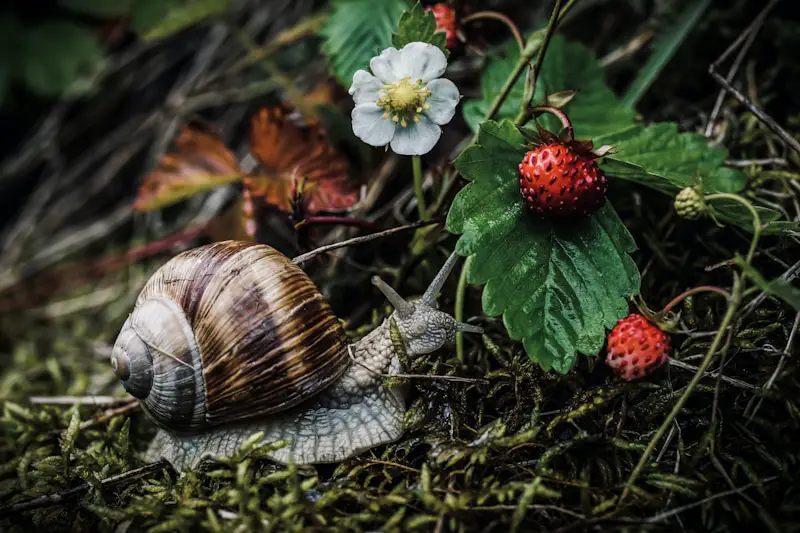
Tasty Treats Can Come at a Cost
While snails will eat almost anything within reach, it is important to remember that not all plants are safe for them to consume. For example, certain plants like daffodils or foxglove can be highly toxic and can lead to severe illness or even death. It is always a good idea to research the plants in your garden before letting your pet snail roam free.
Furthermore, pesticides and chemicals used on the plants can also make them unsafe for consumption, so it is best to avoid using these substances in areas where you plan on keeping your snails. To ensure that your pet snail remains healthy and safe while feeding, offer them a variety of foods and avoid any potentially harmful substances or plants.
Feeding Time Tips
When it comes to feeding time, it is best to provide fresh food every day. The food should be placed in shallow dishes so that the snails can easily access it. It’s important not to overfeed them as this could lead to obesity and other health issues.
When feeding fruits or vegetables with high water content like cucumbers or lettuce, make sure you pat them dry with a paper towel before placing them in the dish. Furthermore, if you have multiple snails living together in one habitat then provide enough food for all of them but not so much that there is still food left over after 24 hours as this could attract insects.
Snails Love Their Greens
Snails have a diverse palate when it comes their diet. They love munching on leaves of different types of greens from lettuce leaves to hosta leaves.
They adore fruits such as strawberries and apples and prefer softer vegetable like cucumbers rather than carrots or broccoli. Different species have unique dietary preferences based on their own physiology requirements such as moisture content for land-dwelling species versus protein-rich diets for those who live at higher altitudes.
However, no matter what food you offer, make sure it is safe for consumption and not harmful to your pet snail. To ensure that your pet snails remain happy and healthy, offer a variety of foods and follow the tips we’ve discussed for feeding time.
Unique Eating Habits of Snails
Scraping Food with the Radula
Snails have a unique feeding structure called the radula, which is located in their mouth. This structure is like a tongue with rows of tiny teeth that the snail uses to scrape food.
The radula is very efficient, and some snail species can scrape up to 14,000 times per hour! The scraping motion allows snails to break down plant cells and release the nutrients inside.
This means that even tough leaves or stems are easy for snails to eat. The radula also helps snails grind up their food as it moves through their digestive system.
Eating Poisonous Plants without Being Affected
One of the most impressive things about snails’ diets is their ability to eat poisonous plants without being affected by them. Some species of snails have developed an immunity to certain toxins found in plants.
For example, some species can eat foxglove plants which are highly toxic for many other animals. This allows them to access a food source that other animals can’t eat.
Experts believe that this immunity might happen because these snails have co-evolved with certain plant species over time. As these plants developed new toxins, the snail population had time to adapt and develop a resistance.
The Role of Food Preferences in Breeding
Another interesting aspect of snail eating habits is how they impact reproduction. In many species, males must provide females with a special type of food during mating season if they want to breed successfully.
For example, in some land-based mollusks called Helix aspersa (or common garden snail), males must give females calcium-rich foods like cuttlefish bone or eggshells before mating. This helps females produce strong eggshells for their offspring.
This means that snail diets can play a big role in the reproductive success of the species. Snails that have access to a diverse range of foods might be more likely to mate and produce healthy offspring.
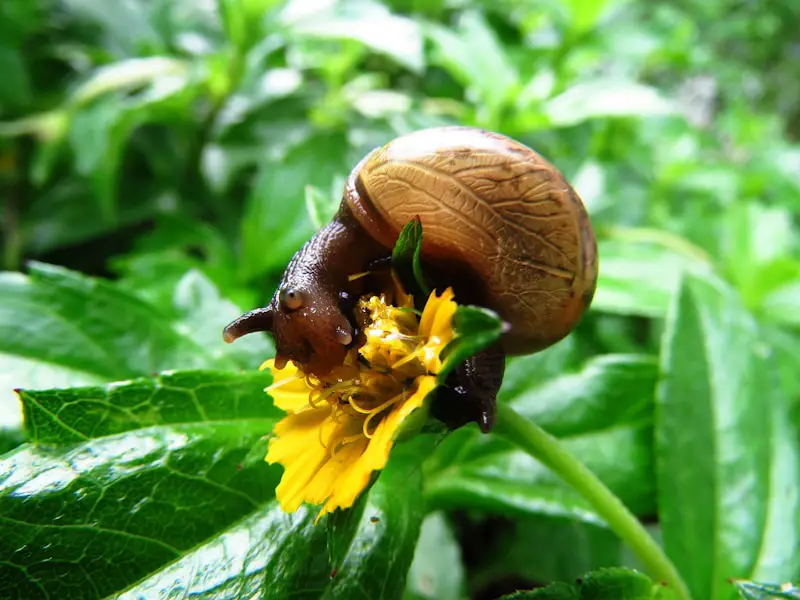
The Importance of Moisture for Snail Diets
It’s important to note that moisture plays a big role in snail diets. Snails need moisture to digest their food properly and regulate their internal temperature. This means that snails are more likely to eat when it’s humid or after rainfall.
If you’re keeping pet snails or trying to attract them to your garden, it’s essential to keep a steady supply of moisture available. You can do this by providing water sources like shallow dishes or keeping plants moist with regular watering.
Understanding the unique eating habits of snails is crucial for their survival and wellbeing – whether they’re living in the wild or as pets. With this knowledge, you can make sure your garden is a welcoming environment for these fascinating creatures!
Environmental Factors Affecting Snail Diet
Climate Conditions Affecting Snail Diet
Snails are known for their ability to adapt to various environments, but climate plays a crucial role in their diet. The temperature and humidity in an area directly impact the type of food snails can eat.
For example, during hot and dry weather, snails tend to stay in shaded areas, where they can find moisture. In such conditions, they prefer juicy fruits or vegetables that contain high levels of water.
On the other hand, during cooler weather, snails have a slower metabolism and can survive on lower quality food. They might eat leaves that are less nutritious.
Temperature fluctuations also affect reproduction cycles in some species of snails. Some species become dormant during cold temperatures and may not feed at all until spring arrives.
Food Availability Influencing Snail Diet
Food availability is another environmental factor that affects a snail’s diet. Snails will consume whatever food is available to them in their environment. If food sources become scarce or inaccessible due to changes in land use or environmental disasters such as droughts or floods, then the types of plants that snails eat will change.
For instance, if there is an abundance of grasses and herbs around an area inhabited by garden snails (Helix aperta), they will preferentially feed on these types of plants over others. However, if these plants become scarce due to droughts or other factors such as increased grazing by livestock animals near the habitat of garden snail colonies, then garden snails will feed on more succulent plants like cacti.
Dietary Variations between Different Species
Different species of snails also have different dietary preferences based on their natural habitats and locations around the world. Some species are found in freshwater environments while others live solely on land. Depending on their location, snails will feed on the plants and vegetation that are available to them in their geographic region.
For example, snails living in wetlands or along riverbanks may consume different types of aquatic plants such as algae and water lilies. Snails living in wooded areas or gardens might prefer eating fruits, flowers or leaves from trees and bushes.
Human Intervention Affecting Snail Diet
Human activities can also have a significant impact on the diets of snails. For instance, agricultural practices such as cultivation of specific crops can influence the types of food available to snails in a given area. This could lead to an increase or decrease in certain plant species that these animals depend on for food.
In addition, human activities that cause soil pollution can greatly affect the quality and quantity of food for snails. Pollution from industrial waste products has been known to cause deformities in some species of snails while others may refuse to feed on contaminated plants altogether.
Conclusion
Environmental factors play a crucial role in determining the diet of snails. Snails are adaptable creatures that can survive under various conditions but their ability to find suitable food is essential for their health and survival. It’s important that we take into account how our actions affect these creatures’ natural habitats so they can thrive within them naturally.
Conclusion
Recap of Key Points Discussed Throughout the Guide
Throughout this guide, we’ve explored the fascinating world of snails and their dietary habits. We’ve learned that while some species are strictly herbivores, others have more omnivorous tendencies.
We’ve also discussed specific foods that snails enjoy such as leaves, fruits, vegetables, and flowers. Additionally, we’ve discovered that environmental factors such as temperature and humidity play an important role in a snail’s diet.
We also discussed the unique eating habits of snails including how they use their radula to scrape food and how some species can eat poisonous plants without being affected. It’s clear that these creatures have much to teach us about survival in challenging environments.
Final Thoughts on Why Understanding a Snail’s Diet is Important for Their Survival
As we wrap up our discussion on snail diets, it’s important to consider why understanding their dietary needs is essential for their survival. Snails play an important role in ecosystems by helping to decompose organic matter and aerating soil with their burrowing. However, when they are not getting proper nutrition from their diet they can become weakened or even die.
By understanding what foods are necessary for a healthy snail diet, we can help ensure these amazing creatures continue to thrive within our environment. Furthermore, by paying attention to environmental factors such as temperature and humidity we can help preserve habitats where snails naturally live.
While many people may view snails as nothing more than slimy garden pests or aquarium curiosities; they are valuable contributors to our natural world who deserve our respect and protection. By learning more about what makes up a healthy diet for these fascinating creatures we can do our part in supporting their continued existence for generations to come!

